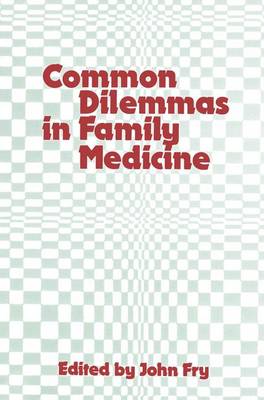One of the exciting challenges of medicine has been the reaching of decisions based on less than complete evidence. As undergraduates in teaching hospitals future physicians are taught to think in clear and absolute black and white terms. Diagnoses in teaching hospitals all are based on supportive positive findings of in- vestigations. Treatment follows logically on precise diagnosis. When patients die the causes of death are confirmed at autopsy. How very different is real life in clinical practice, and particularly in family medicine. By the very nature of the common conditions that present diagnoses tend to be imprecise and based on clinical assessment and interpretation. Much of the management and treatment of patients is based on opinions of individual physicians based on their personal experiences. Because of the relative professional isolation offamily physicians within their own practices, not unexpectedly divergent views and opinions are formed. There is nothing wrong in such divergencies because there are no clear absolute black and white decisions.
General family practice functions in grey areas of medicine where it is possible and quite correct to hold polarized distinct opinions. The essence of good care must be eternal flexibility and readiness to change long-held cherished opinions. To demonstrate that with many issues in family medicine it is possible to have more than one view I selected 10 clinical and 11 non-clinical topics and invited colleagues and fellow-practitioners to enter into a debate-in-print.
- ISBN10 0942068041
- ISBN13 9780942068047
- Publish Date 30 July 1983
- Publish Status Out of Print
- Out of Print 4 March 2015
- Publish Country NL
- Publisher Springer
- Imprint Kluwer Academic Publishers
- Edition 1983 ed.
- Format Hardcover
- Pages 420
- Language English
